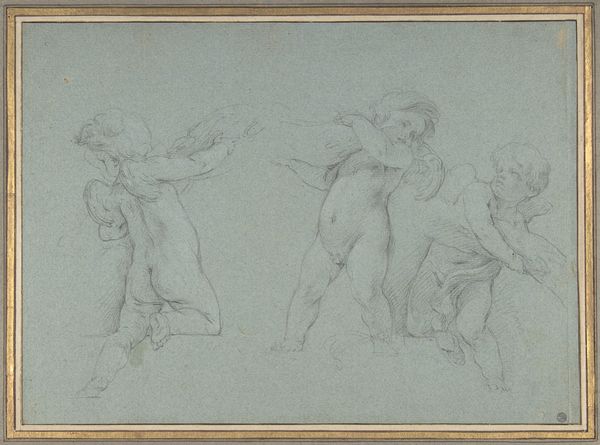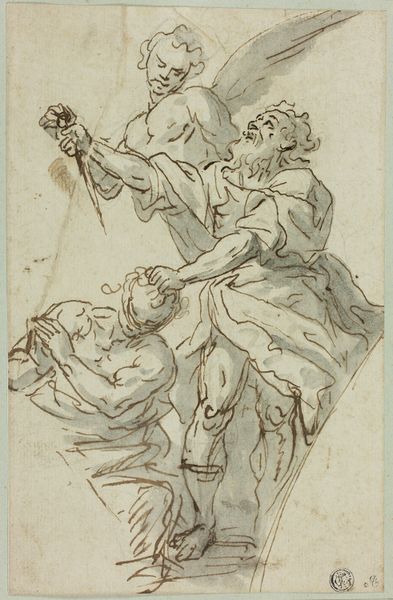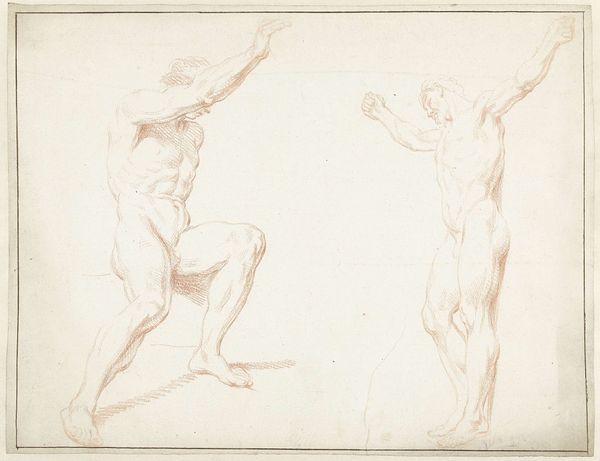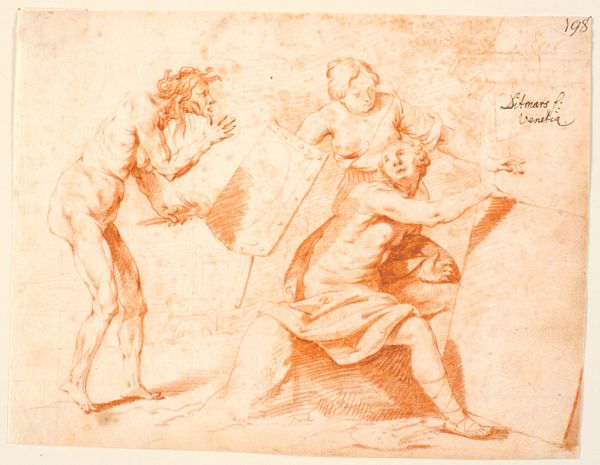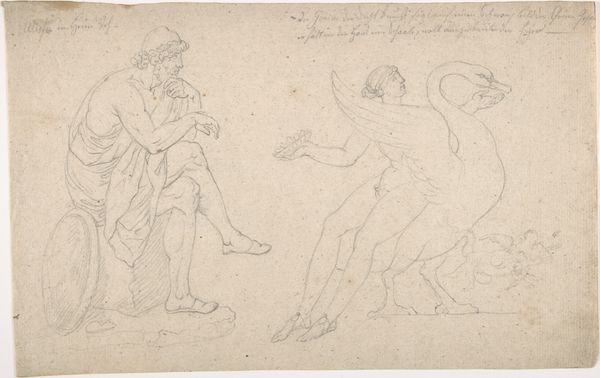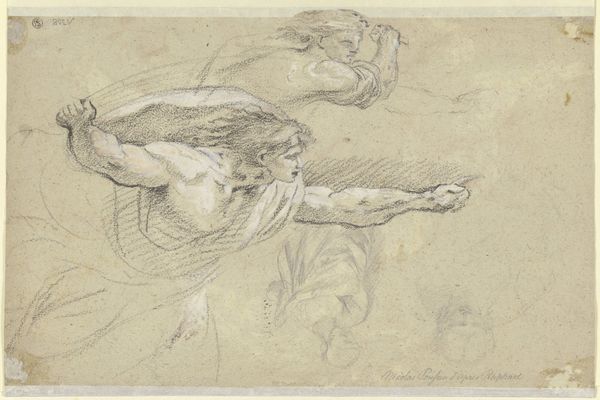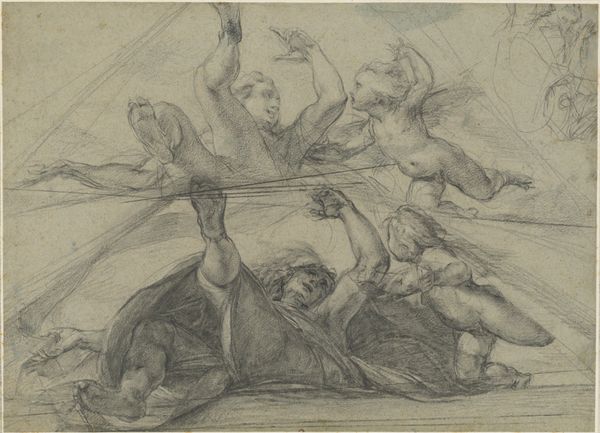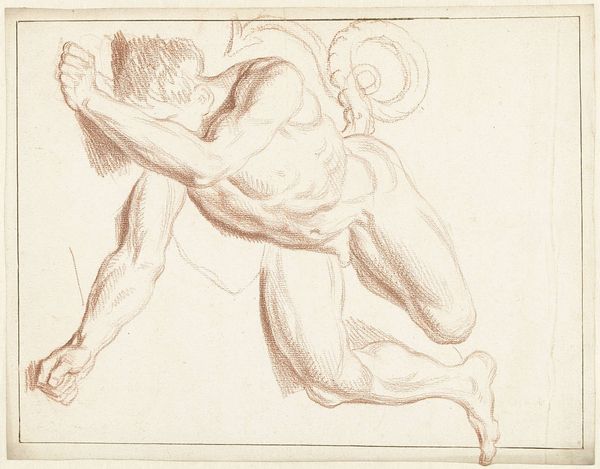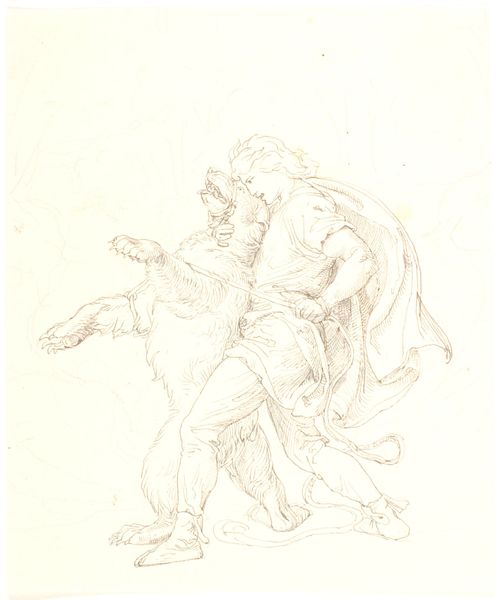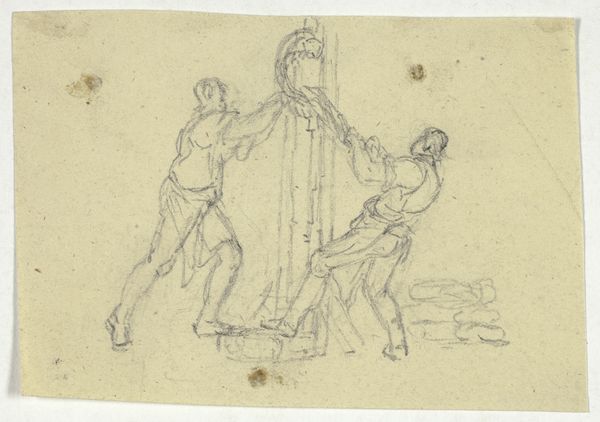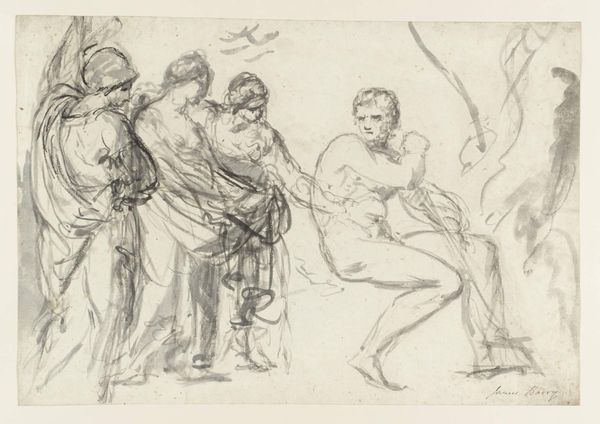
En mand klædt i toga sidder med en lygte i venstre hånd, t.v. for ham knæler en nøgen mand med oprakte arme 1773 - 1776
0:00
0:00
drawing, pencil
#
drawing
#
figuration
#
pencil
#
genre-painting
#
academic-art
#
nude
Dimensions: 109 mm (height) x 156 mm (width) (bladmaal)
Editor: Here we have "A man dressed in a toga sits with a lantern in his left hand, to the left of him a naked man kneels with arms raised" by Nicolai Abildgaard, created with pencil on paper between 1773 and 1776. I'm immediately drawn to the contrast between the draped figure and the nude one – there’s something almost theatrical about it. What do you see in this piece from a formal perspective? Curator: The most striking element is indeed the juxtaposition of textures and forms. Consider the carefully rendered drapery, the linear precision that defines the toga, contrasted with the softer, more curvilinear rendering of the nude figure. The composition itself utilizes a distinct division of space, bisecting the scene into two distinct areas of focus. The overall effect is one of carefully constructed opposition. Editor: Opposition? In what way? Curator: Notice how the artist utilizes light and shadow to further emphasize this binary. The toga-clad figure is partially obscured in shadow, illuminated only by the lantern, while the nude figure is bathed in a more direct, although implied, light source. Furthermore, observe the dynamic tension created by the opposing gestures of the figures, one seated and contemplative, the other kneeling and expressive. These elements create a fascinating dynamic that pulls the viewer's eye back and forth across the composition. Editor: That's interesting. I hadn’t considered the implied light source and its impact on creating a division between the two. Thank you for this fresh perspective! Curator: My pleasure. It’s in deconstructing these formal elements that we may better appreciate the artistry at play.
Comments
No comments
Be the first to comment and join the conversation on the ultimate creative platform.
